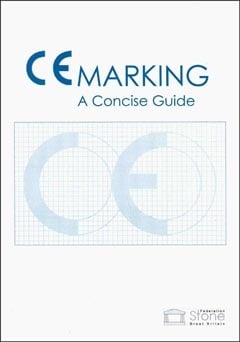The UK’s construction industry and its supply base is walking a tightrope over CE marking for construction products, according to Tarmac Building Products.
CE marking of products that have a harmonised European standard (a BS EN number) became compulsory under Building Regulations in July last year. It covers products such as stone cladding and paving. If such products are used that are not CE marked, any failure is likely to prove expensive. Yet many developers and specifiers seem to be ignoring the requirement to use CE-marked products.
Tarmac's warning is aimed at specifiers, contractors and local authorities. They have a duty of care to ensure that all products used on construction projects conform to the new regulations.
Many construction companies using heavy construction materials and also many companies supplying the building products sector remain confused over CE markings on key products, says Tarmac.
Stuart Allerton, Quality Systems Manager at Tarmac Building Products, comments: “It is vital that specifiers, designers, contractors and local authorities, who are responsible for ensuring their products have the correct characteristics for their specified projects, understand which products need to be CE marked and those that do not.”
On 1 July it became mandatory for manufacturers to display CE markings for certain products as part of the European Commission’s 2011 Construction Products Regulation. Prior to the July 2013 legislation update, manufacturers only needed to CE mark products on a voluntary basis. The Construction Products Regulation is part of EU law and, unlike an EU Directive, there is no opt-out.
Mr Allerton continues: “The problems stem from continuing confusion over which products are covered by the directive and which are not. For example, ready-to-use mortars, floor levellers, tile adhesives, concreting sand, render, screed, aggregate blocks and railway ballast are all covered by the regulations.
“However, ready-mixed concrete is one such product which does not require a CE marking, despite being used in large volumes within the heavy construction market. The reasoning behind concrete’s notable absence relates to the fact that the European Standard for concrete is not a harmonised standard and therefore this product cannot be CE marked.”
Before 1 July last year, many suppliers to the construction industry put their products through a rigorous testing regime which included the creation of Declarations of Performance and the preparation and maintenance of technical files (technical data related to the CE marking of the product) for all affected products. In addition, independent testing and third party audits have been carried out by notified bodies for relevant products.
Mr Allerton continues: “My advice to the construction industry is to check whether the products being used need to be covered by the CE markings. Manufacturers are now obliged to provide this information to customers – for instance on websites.
“It is vital that this information is made available to customers – from the jobbing builder to national construction firms – in order to ensure familiarity with the new regulations and the correct specification."

